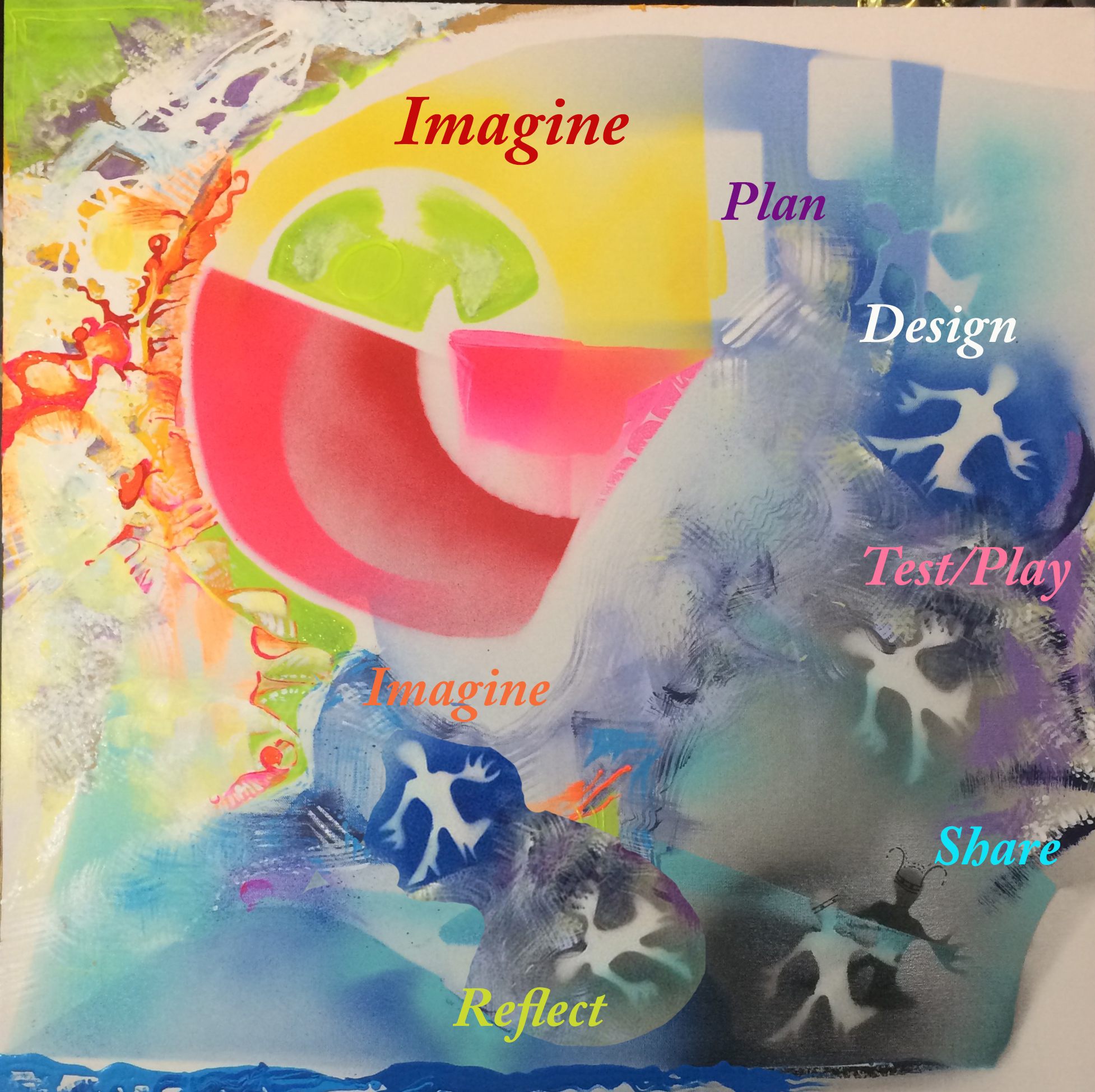
Iterative Design
Invention, Design and Powerful Ideas
Task: Defining iterative design using my original artwork (see above), and then explaining how this process can be used in my classroom as well as throughout the school(s).
In learning to understand the course question about the design process, I first created a design of the iterative design process using my own artwork. Well, yes, I certainly used the spiral process in creating this new iteration of the original image. First, it was fun, and at times, hard fun. The final iteration is on my blog page for iteration question. The ability to be able to use the computer, and various computer programs to create and recreate is ideal. Also, the fear of change disappears – as long as you save your different iterations.
The original image of this painting lives on my art Flicker page.
Does iterative design work for all subjects and classroom projects? Why or why not?
I believe that all or parts of the iterative design process would work for all subjects and classroom projects.
For example, I can clearly envision going through the iterative design steps during library readings. With stories we may not be actually "building" things, but we are building ideas in our minds, and making connections with the reading. We are planning how we could use this new information from the story.
Have I learned a lesson? Am I inspired to write or illustrate a story? Maybe I want to read more by this author, or see more of this illustrator's artwork. After reading/listening to a story you might even want to plan to make something. Three stories come to mind: The Soda Bottle School: A True Story of Recycling, Teamwork, and One Crazy Idea by Laura Cutner (The Inspirational Video), Ada's Violin by Susan Hood and The Boy Who Harnessed the Wind by William Kamkwamba. These are great stories to inspire making - making for a purpose and making with things that are readily available.
It would only take a little imagination to see how you could incorporate any of these books into a science, math or social studies lesson. Any of these could even become a larger community project. Once again, the possibilities are endless. My head is now spinning with ideas. I love to connect books to the classroom curriculums.
Let me outline a step-by-step plan for the book, Not A Box by Antoinette Portis. This is a simple picture book that could be used by all ages at the elementary school.
- Have an assortment of cardboard boxes on display.
- Read the story.
- Have students imagine what they see in the boxes that you have passed out to the group. Anything goes - I will make a list of all the possibilities on the smartboard to inspire and re-inspire the students. I need a good prompt!
- Have students plan on paper what they would like to create with a chosen box/boxes. Why are you making this project? Will you make it alone, or with a partner/group? What supplies would you need? Should this be a real or digital project?
- How will you share your project? Should you record your steps along the way? If so, how? On paper, or maybe digitally?
- Reflection - show the finished project. How do you feel about the final result? Did it turn out as expected? Show it to others, ask for feedback from the other students and your teachers.
- Imagine what you would have done differently.
Other invention/imagination-type books that come to mind: Papa's Mechanical Fish by Candace Fleming, If I Built A Car/If I Built A House by Chris VanDusen, Rosie Revere Engineer by Andrea Beaty (and others by this author), The Most Magnificent Thing by Ashley Spires, by What Do You Do With An Idea? by Kobi Yamada, Herve Tullet books (Press Here), and pop-up books (Sabuda and others)...
Posted on 7-08-18 & Posted on CML.
Ch. 3 Question 3
